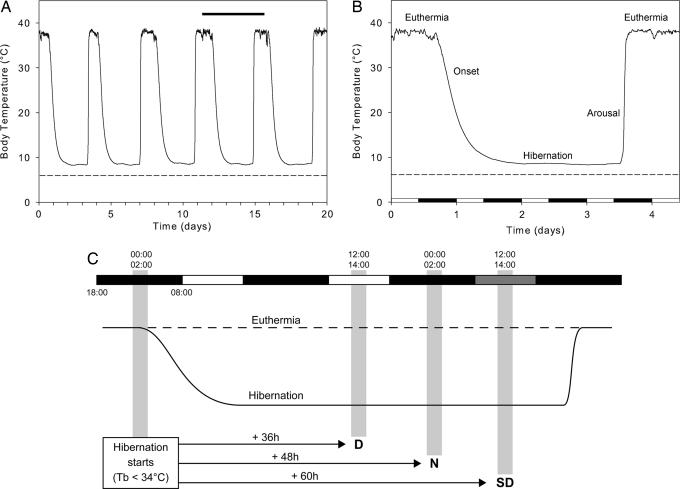Fig. 1.
European hamster's hibernation pattern and experimental paradigm. (A) Typical Tb recording (animal B17) illustrating the major phases of the hibernation cycle of the European hamster. Three weeks of recording (November 25 to December 14, 2005) show five hibernation cycles. The ambient temperature (Ta) of the climatic room was set at 6 ± 2°C (dashed line). The horizontal black bar represents the period detailed in B. (B) Focus on a single hibernation cycle (December 6 to December 10, 2005). Entrance into hibernation (Tb < 34°C) occurred during nighttime. (C) Experimental paradigm used for the experiment. For the euthermic group, the hamsters had a Tb close to 37°C and were aroused from hibernation for >48 h. These animals were killed at mid-day (D, 1300; n = 6), mid-night (N, 0100; n = 6), or subjective mid-day (SD, 1300; darkness from the previous day; n = 5). For the hibernating group, only the animals entering torpor (Tb <34°C) between 0000 and 0200 (mid-night) were considered. Their killing occurred 36 h (day; n = 4), 48 h (night; n = 5), or 60 h (subjective day; no lights on for the last day; n = 7) later. Light and dark bars indicate day and night, respectively; dark gray bar, subjective day.

